Eye care in the 1800s
wardnate77
Published
10/12/2013
It used to be a whole lot worse, as this collection of shocking photos of ophthalmology from the 19th and 20th centuries show.
- List View
- Player View
- Grid View
Advertisement
-
1.
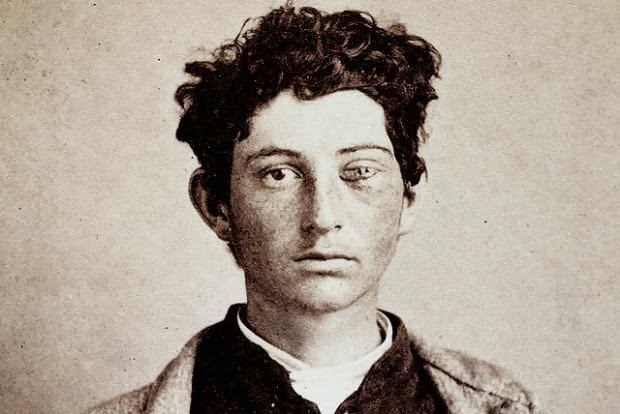 The images are courtesy of New York ophthalmologist Dr. Stanley B. Burns who has one of the world's largest collections of early medical photography.
The images are courtesy of New York ophthalmologist Dr. Stanley B. Burns who has one of the world's largest collections of early medical photography. -
2.
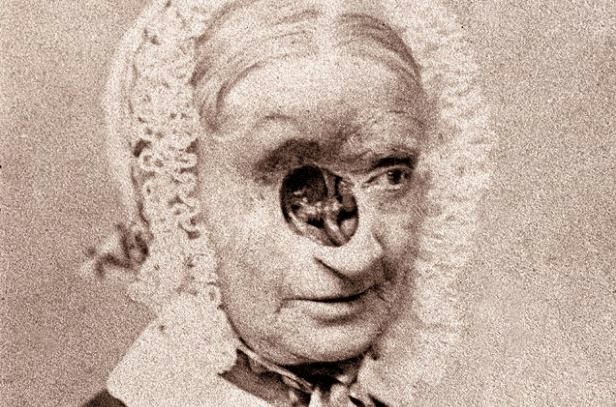 Rodent cancerIn the 19th Century, the cancer now called basal cell carcinoma was known as rodent cancer. That's because patients with advanced cases, like this woman treated in London in the mid-1800s, looked as if their flesh had been gnawed away by rats.
Rodent cancerIn the 19th Century, the cancer now called basal cell carcinoma was known as rodent cancer. That's because patients with advanced cases, like this woman treated in London in the mid-1800s, looked as if their flesh had been gnawed away by rats. -
3.
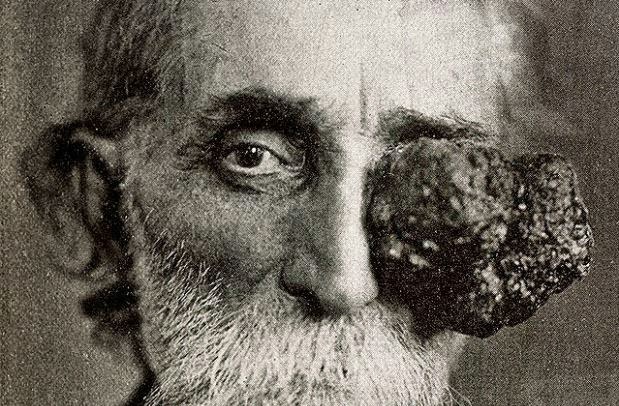 Eye tumorUntil the late 1800s, cancerous growths were often left untreated until they were very advanced, as shown in this 1906 photograph. Surgery was a last, desperate resort - after eye patches no longer sufficed.
Eye tumorUntil the late 1800s, cancerous growths were often left untreated until they were very advanced, as shown in this 1906 photograph. Surgery was a last, desperate resort - after eye patches no longer sufficed. -
4.
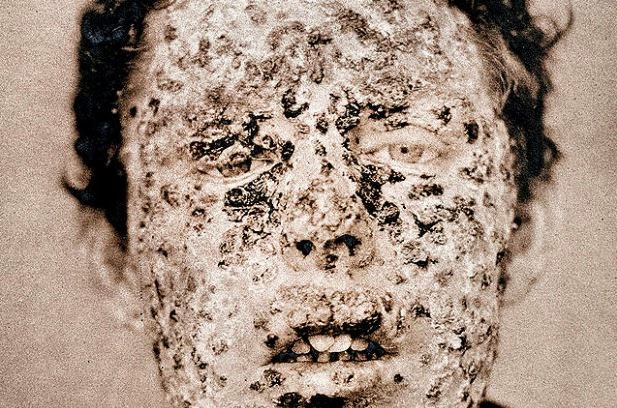 SmallpoxThere hasn't been a case of smallpox in the U.S. since 1949. But between 1900 and 1979, an estimated 300 million to 500 million around the world died of the disease. This photo shows a man infected during an 1881 smallpox epidemic.
SmallpoxThere hasn't been a case of smallpox in the U.S. since 1949. But between 1900 and 1979, an estimated 300 million to 500 million around the world died of the disease. This photo shows a man infected during an 1881 smallpox epidemic. -
5.
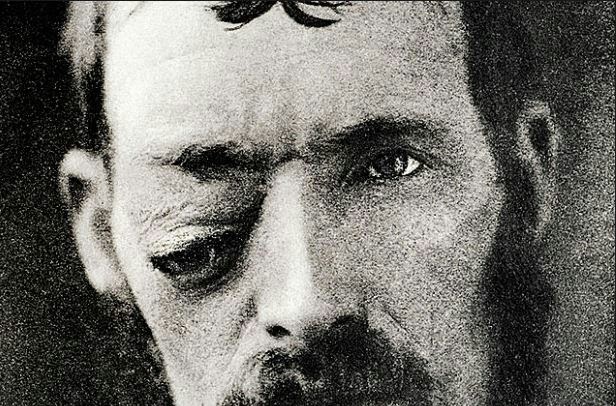 Eye abscessBefore the days of antibiotics, sinusitis and minor respiratory infections could lead to abscesses of the eyes. This 1908 photograph shows a man whose abscess has caused his eye to shift downward.
Eye abscessBefore the days of antibiotics, sinusitis and minor respiratory infections could lead to abscesses of the eyes. This 1908 photograph shows a man whose abscess has caused his eye to shift downward. -
6.
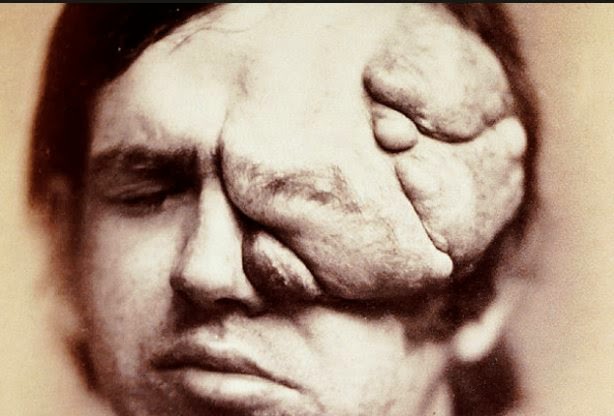 NeurofibromatosisThis photograph first appeared in 1871 in the first medical photographic journal. It shows a patient with von Recklinghausen's disease, a disfiguring hereditary disease now known as neurofibromatosis. There is still no cure for the disease. Patients often have the "fibromas" surgically removed - unless they are too big or too numerous to remove.
NeurofibromatosisThis photograph first appeared in 1871 in the first medical photographic journal. It shows a patient with von Recklinghausen's disease, a disfiguring hereditary disease now known as neurofibromatosis. There is still no cure for the disease. Patients often have the "fibromas" surgically removed - unless they are too big or too numerous to remove. -
7.
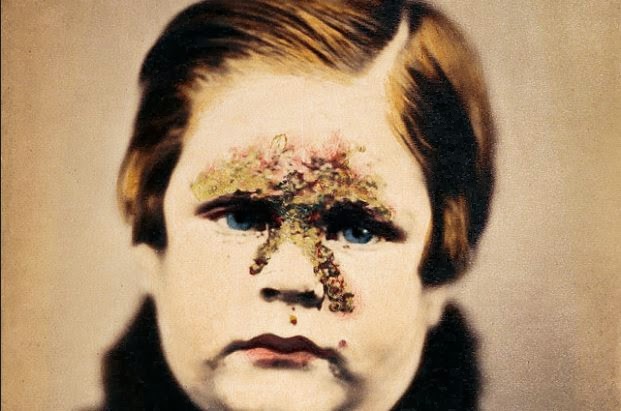 ImpetigoNow rare, the bacterial infection known as impetigo was common in the 19th Century. This photo appeared in 1865 in an English textbook on skin disorders. It shows a child with pustules typical of the disease. Impetigo is typically seen in children, often following a cut, abrasion, or insect bite.
ImpetigoNow rare, the bacterial infection known as impetigo was common in the 19th Century. This photo appeared in 1865 in an English textbook on skin disorders. It shows a child with pustules typical of the disease. Impetigo is typically seen in children, often following a cut, abrasion, or insect bite. -
8.
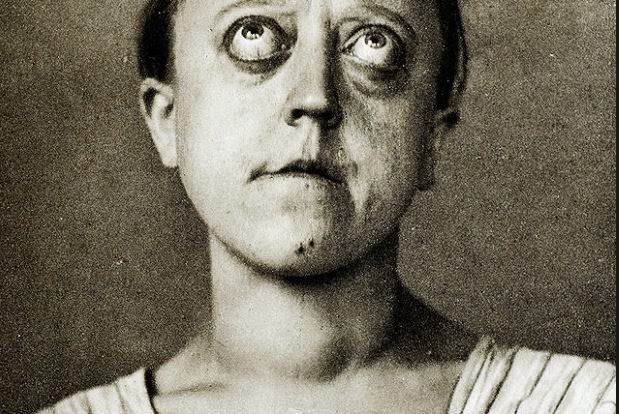 Bulging eyesHyperthyroidism - the same disorder that causes goiters - can also cause bulging eyes, as shown in this 1908 photograph. As the eyes protrude, the tend to dry out, sometimes resulting in scarring, infection, and blindness. Hyperthyroidism is also known as Grave's disease.
Bulging eyesHyperthyroidism - the same disorder that causes goiters - can also cause bulging eyes, as shown in this 1908 photograph. As the eyes protrude, the tend to dry out, sometimes resulting in scarring, infection, and blindness. Hyperthyroidism is also known as Grave's disease. -
9.
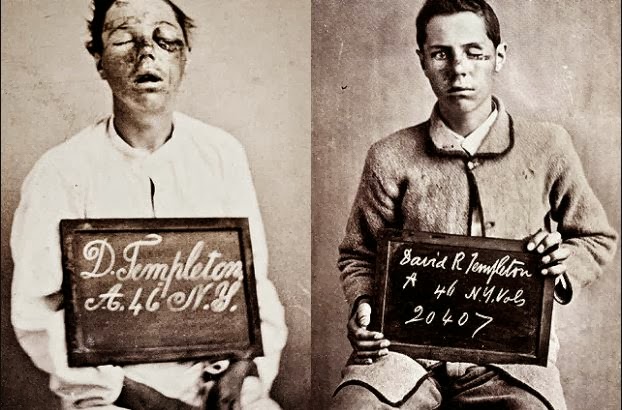 Civil War bulllet wounds of the eyeDuring the Civil War, an army surgeon named Dr. Reed Bontecou photographed wounded soldiers. Shown here are photos of a soldier from New York before and after his battlefield wounds to the eyes were treated.
Civil War bulllet wounds of the eyeDuring the Civil War, an army surgeon named Dr. Reed Bontecou photographed wounded soldiers. Shown here are photos of a soldier from New York before and after his battlefield wounds to the eyes were treated. -
10.
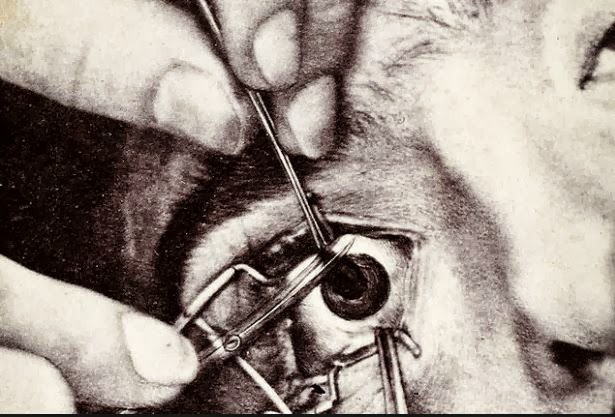 Cutting the irisToday's eye surgeons can laser a hole in a patient's iris the colored portion of the eye in a matter of seconds. But in the late 1800s, doctors used a sharp tool to perform "iridectomy," as shown in this 1870 photograph. Iridectomy allowed the creation of an artificial pupil, restoring sight to those blinded by common infectious and inflammatory disorders.
Cutting the irisToday's eye surgeons can laser a hole in a patient's iris the colored portion of the eye in a matter of seconds. But in the late 1800s, doctors used a sharp tool to perform "iridectomy," as shown in this 1870 photograph. Iridectomy allowed the creation of an artificial pupil, restoring sight to those blinded by common infectious and inflammatory disorders. -
11.
 LeprosyThis 1867 photograph shows a woman with a form of leprosy known at the time as "elephantiasis des Grecs." It first appeared in a French medical text published in 1868, "Clinique photographique de l'hospital Saint-Louis." Three years later, in 1871, this dreaded disease - which affects the eyes and causes enlargement of various parts of the body - was found to be caused by a bacterium.
LeprosyThis 1867 photograph shows a woman with a form of leprosy known at the time as "elephantiasis des Grecs." It first appeared in a French medical text published in 1868, "Clinique photographique de l'hospital Saint-Louis." Three years later, in 1871, this dreaded disease - which affects the eyes and causes enlargement of various parts of the body - was found to be caused by a bacterium. -
12.
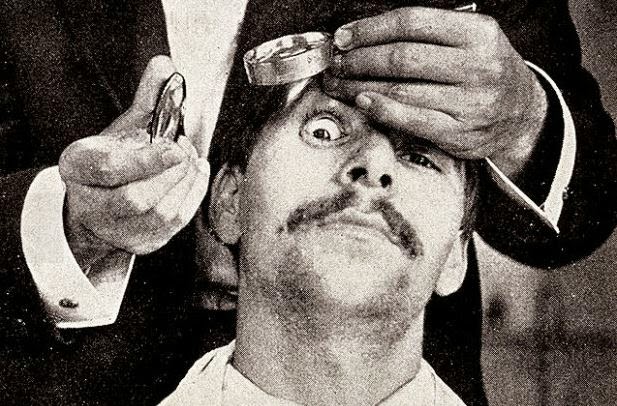 Eye exam by candlelightWhat's the best light source for looking inside the eye? Until the end of the 1920s, when the electric "slit lamp" became widely available, candlelight was the best bet - as shown in this 1910 photograph. Examining the interior of the eye made it possible to conquer many eye diseases.
Eye exam by candlelightWhat's the best light source for looking inside the eye? Until the end of the 1920s, when the electric "slit lamp" became widely available, candlelight was the best bet - as shown in this 1910 photograph. Examining the interior of the eye made it possible to conquer many eye diseases. -
13.
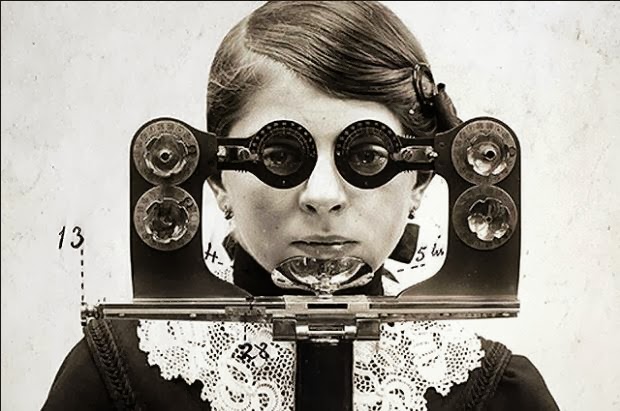 Early phoropterHere's an early version of the phoropter, a device eye doctors and opticians used to find the correct corrective lens. The circa 1895 device shown in this photo housed a variety of lenses, including ones to treat astigmatism and to evaluate other eye problems.
Early phoropterHere's an early version of the phoropter, a device eye doctors and opticians used to find the correct corrective lens. The circa 1895 device shown in this photo housed a variety of lenses, including ones to treat astigmatism and to evaluate other eye problems. -
14.
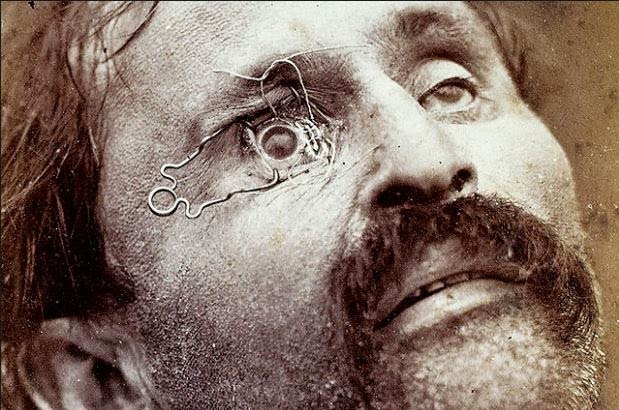 Staged eye surgeryIn 1870, a French ophthalmologist named Edouard Meyer included a series of photos in his textbook on surgery. The film of the era was too "slow" to take photos of actual operations, so he staged photos using cadavers. In this photo, a clamp holds the eye open to show where a scalpel should be positioned to remove a cataract.
Staged eye surgeryIn 1870, a French ophthalmologist named Edouard Meyer included a series of photos in his textbook on surgery. The film of the era was too "slow" to take photos of actual operations, so he staged photos using cadavers. In this photo, a clamp holds the eye open to show where a scalpel should be positioned to remove a cataract.
- REPLAY GALLERY
-
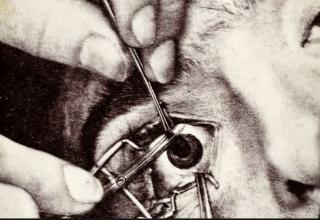
- Eye care in the 1800s
- NEXT GALLERY
-

- 40 Hot Girls From Oktoberfest
The images are courtesy of New York ophthalmologist Dr. Stanley B. Burns who has one of the world's largest collections of early medical photography.
14/14
1/14






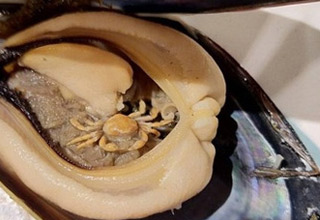


1 Comments